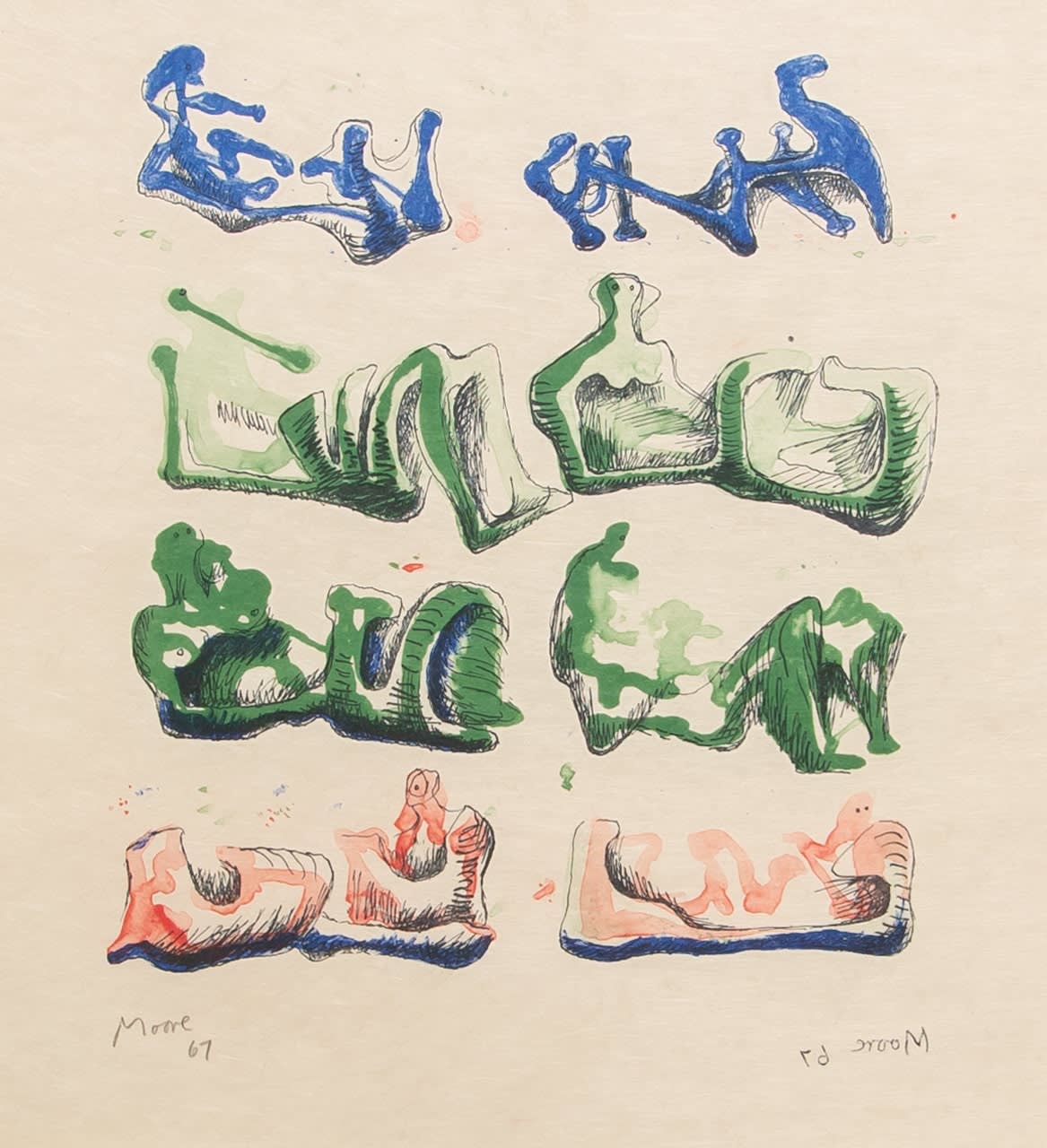-
Henry Moore U.K., 1898-1986
Eight Reclining Figures, 1967Lithograph printed in colors on Japan paper76 x 55 cm
82.5 X 61.4 cm (Framed)© The Estate of Henry MooreFurther images
Henry Moore's 'Eight Reclining Figures' (1967) features eight abstract figures arranged in two vertical rows, each pair sharing the same colour scheme - purple, brown, orange, and blue - set...Henry Moore's "Eight Reclining Figures" (1967) features eight abstract figures arranged in two vertical rows, each pair sharing the same colour scheme - purple, brown, orange, and blue - set against a grey background with dark marks suggesting shadows. The work exemplifies Moore's lifelong fascination with the reclining figure motif, which became a cornerstone of his artistic practice.
The reclining figure theme in Moore's work can be traced back to the 1920s, heavily influenced by his encounter with an Aztec Chacmool figure in Paris. This non-Western influence profoundly shaped his early artistic development. The motif gained deeper significance during World War II when Moore witnessed civilians sheltering in London's Underground stations, describing the scene as "hundreds of Henry Moore figures stretched along the platform".
Moore emerged as a symbol of post-war optimism in Britain's reconstruction period. His work represented a humanist vision that resonated internationally, leading to numerous public commissions, including sculptures at UNESCO Headquarters in Paris and Lincoln Center in New York. The "Eight Reclining Figures" was created during the height of Moore's career in the 1960s, when he explored increasingly abstract forms inspired by nature.
The lithograph demonstrates Moore's masterful integration of abstract and figurative elements. His approach unified classical and romantic elements and conscious and unconscious aspects, creating works that bridged multiple artistic movements. The piece is part of Moore's extensive graphic work, which he developed alongside his sculpture, particularly when materials for large-scale works were scarce.
Moore's influence on British sculpture cannot be overstated. He became the catalyst for the British sculptural renaissance and brought British sculpture into the international spotlight. His success led to the establishment of the Henry Moore Foundation in 1977, ensuring his legacy would continue to influence future generations of artists.
The "Eight Reclining Figures" represents a culmination of Moore's artistic preoccupations: his interest in the human form, his ability to abstract natural forms while maintaining their essential humanity, and his sophisticated use of space and form. The work represents Moore's position as one of the most significant sculptors of the 20th century, whose influence extended far beyond Britain to shape the course of modern sculpture internationally.Publications
Henry Moore: Catalogue of Graphic Work 1931-1972, by Gérald CRAMER, Alistair GRANT and David MITCHINSON.
Henry Moore: Prints and Portfolios
Join our mailing list
* denotes required fields
We will process the personal data you have supplied to communicate with you in accordance with our Privacy Policy. You can unsubscribe or change your preferences at any time by clicking the link in our emails.











